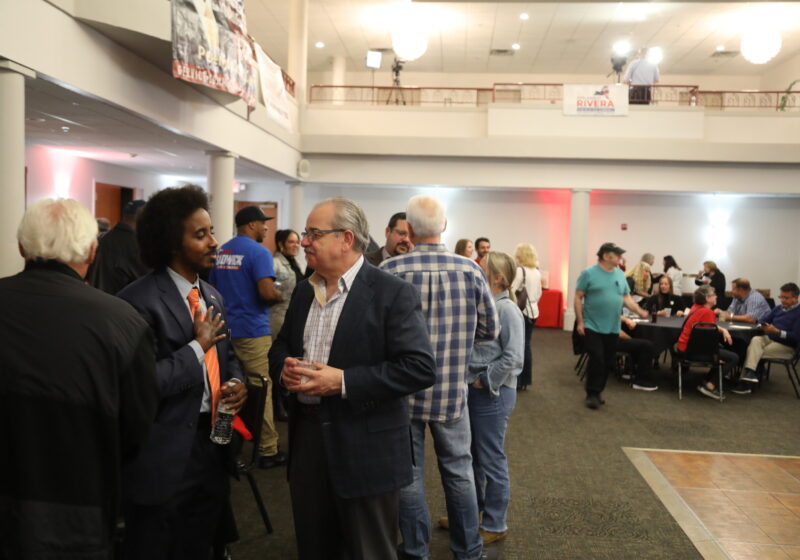Iowa State University professor Matthew Stanley ’98 visited UR on Wednesday to deliver his lecture “How Einstein Became Famous: Science, Religion and World War I.” In it, he consistently emphasized the blurred lines between science and religion.
“It is tremendously gratifying to be here today,” Stanley said. “It is an honor – but a bit nerve-wracking, as I look out and see many of my mentors from UR.”
Stanley began his lecture by defining his work to the audience. “I compare science and religion as things done by people, and therefore I look at people who embody both,” Stanley said.
“Religious scientists are often viewed as myths, but to say that scientists cannot possibly be religious is to say that Sir Isaac Newton was not a scientist, which is just out of all logic. I view this subject from a historical point of view rather than a philosophical one.”
Stanley received a Bachelor of Science in Optics and a Bachelor of Arts in Religion from UR, and then received a doctoral degree in the history of science from Harvard University.
He is currently focusing on the life of Royal Astronomical Society member A. S. Eddington as the near-singular force behind Einstein’s fame.
“When Einstein began his research, he was completely unknown outside of Germany. In 1914, he had traveled with a team of scientists to test his Theory of Relativity, and right then the war broke out,” Stanley said. “He and his team were in the middle of their research preparing to take photographs of the solar eclipse when they were arrested and held as prisoners of war.”
In 1915, Einstein published his Theory of General Relativity, however the chaos within Europe along with extreme anti-German sentiment prevented his radical proposal from disseminating throughout scientific circles.
“World War I divided Europe in both intellectual and social senses. Scientific progress did not make its way across enemy lines,” Stanley said. “It is mere luck and quite remarkable that Eddington received a letter from a Dutch scientist, Willem de Sitter. As it was, the Dutch were neutral, and de Sitter found a chance to live out his Quaker values by publicizing Einstein’s theory.”
Stanley said that the Quaker Peace Testimony preached passivity, pacifist ideals and internationalism.
Eddington, fueled by his religious convictions, attempted to resolidify the international scientific community by boasting of Einstein’s brilliance while emphasizing his German nationality, his Jewish religion and his stance as a pacifist.
“If anyone else had received Sitter’s letters telling of Einstein’s theory, everything would have been different. Eddington had unique characteristics – he was a math geek, so he could read the language of the theory, he was fascinated with and not fully convinced of the law of gravity which most other scientists considered untouchable and he was an internationalist,” Stanley said.
Throughout his lecture, held in the Hawkins-Carlson Room, Stanley spoke rapidly and fired out quotes displayed on his overhead screen while the 30 or so students and professors present chuckled at his witticisms regarding Einstein’s destiny, or – as some believe – his sheer luck.
“It’s always exciting to meet alumni who became successful, but this was especially great because our department is so small and because there are not many positions available in the field per year,” religion major and senior Mikaela Colner said. “Stanley’s energy and enthusiasm really came through in the discussion at the end where the audience not only asked questions but challenged some of his ideas. I was also concerned about whether or not I’d be able to make the science-religion connection because I was a few minutes late, but his argument was clear and pertinent. I didn’t miss a beat.”Welzer can be reached at bwelzer@campustimes.org.




